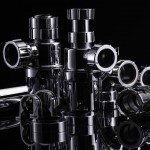
– forged-Valves –
Forging is a kind of process that using metal forming machinery presses to metal billet, making it deform plastically to acquire mechanical properties, shape and size. Forging is a common forming process widely utilized in machinery. Forging can eliminate cast loose and welding holes inside metal. The mechanical properties of forging are more excellent than castings.
Based on temperature, forging can be classified into cold forging and hot forging. Generally, cold forging is in progress under room temperature. Hot forging is conducted under temperature which is higher than recrystallization temperature of metal. The forging whose temperature is lower than recrystallization is called as warm forging.
Casting is a kind of injection molding, injecting molten liquid metal into prepared mould. It forms castings after cooling. Based on technique, casting can be classified into sand casting, pressure casting, investment casting, shell mold casting, cavityless casting, low pressure casting, gravity casting, etc.
Castings of valve mean the components are cast, including body, bonnet and hand wheel. Casting is used to manufacture components having large sizes for coast savings. However, forging is used to manufacturer small sizes valves.
Valves contain body, bonnet, stem, disc. Stem adopts forging. Forging can be replaced by rolled bar. Rolled bar can be also acceptable under low pressure. Disc, body and bonnet can be made of bar directly. Components having large sizes adopt casting. Casting materials can be classified into carbon steel, alloy steel and stainless steel. Carbon steel: WCA, WCB, WCC; Alloy steel: WC6, WC9; Stainless steel: CF8, CF8M, CF3, CF3M.
Sourced by ekomeri





